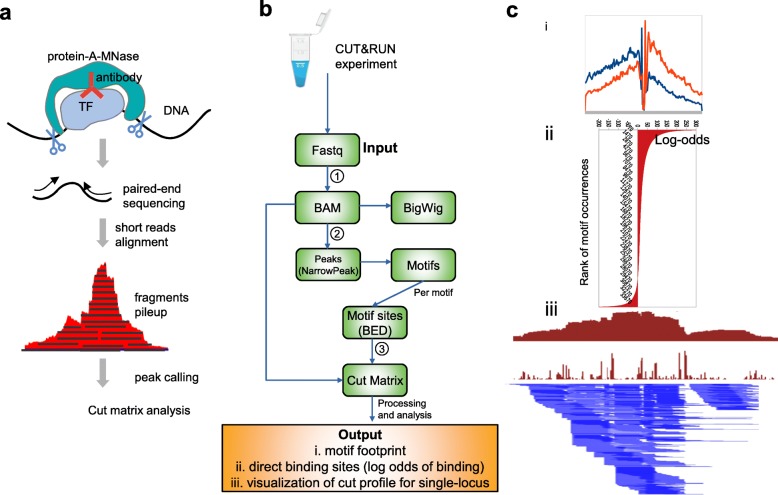Fig. 1.
a Schematic of CUT&RUN. pA-MN is recruited to TF-bound antibody and cleaves around TF binding site, liberating DNA fragments for sequencing. Subsequent steps require a specially designed computational pipeline to extract maximal information from the data. b Overview of CUT&RUNTools. Step 1: input paired-end raw reads are aligned to the reference genome with special care for short-read trimming and alignment. Step 2: peaks are called based on fragment pileup. A fixed window around the summit of each peak is used to perform de novo motif finding. Step 3: the cut matrix is calculated for each motif of interest and used to generate the three outputs: (i) motif footprint, (ii) direct binding site identification, and (iii) visualization. c The output of CUT&RUNTools at the chr3:98302650-950 region as an example

